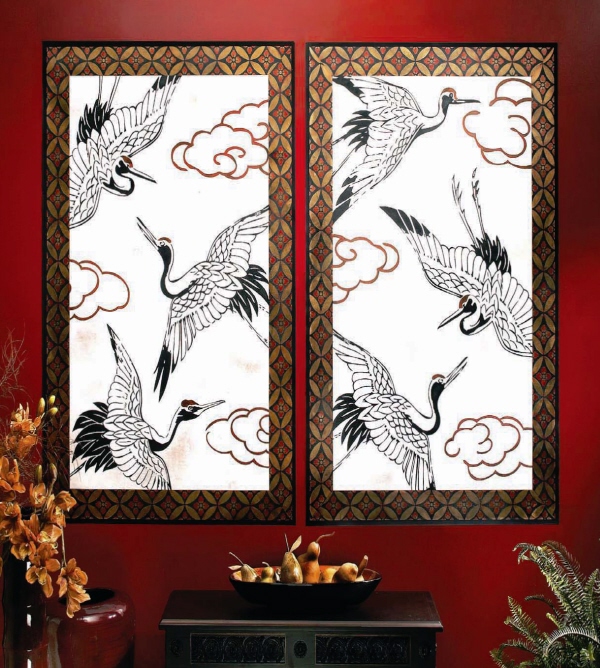
JAPANESE CRANE MURALS

MELANIE ROYALS
Cranes are thought to be one of the oldest birds on earth, and they have a long history in Japanese traditions and legends. These majestic white birds mate for life and are devoted to their partners and their offspring, making them a popular motif for Japanese weddings. In fact, throughout all of Asia, the crane is a symbol of enduring love, peace, happiness and eternal youth.
BEFORE SHE PAINTED

Melanie Royals studied both art and fashion design in college while working as a waitress. Here’s her story: “I got into the decorative painting business before there was such a thing. In 1984, while I was pregnant with my son, I picked up The Art of Stenciling, written by Adele Bishop and Cile Lord in the 1970s. I was hooked. With the book as a guide, I taught myself how to cut and apply stencil patterns to the walls of my new home.
“Shortly after my son was born, a friend from the restaurant I had waitressed at opened up a Victorian bed and breakfast. I talked myself into the job of designing and stenciling five of the rooms. Stenciling then was the latest new (formerly old) craft that was undergoing a resurgence in popularity. The designs included hearts, geese and roses. All of the walls were off-white. I worked for several weeks and earned the grand sum of $450.00. I was thrilled! The rest, as they say, is history.”
MATERIALS
Surface
Roc-lon multi-purpose cloth (available from Royal Design Studio)
Brushes
 -inch (10mm) and 1-inch (25mm) stencil brushes
-inch (10mm) and 1-inch (25mm) stencil brushes
LusterStone by Faux Effects
Ebony Frost, Mandarin Red, Snowflake White
Modern Masters Metallic Paints
Olympic Gold, Sashay Red
Additional Materials
Blue painter’s tape
Craft knife
Japan scrapers
Metal ruler
Modello® Decorative Masking Pattern: Japanese Crane Panels (www.modellodesigns.com)
Royal Design Studio stencil: Floral Lattice Allover (www.royaldesignstudio.com)
Venetian Trowel
SURFACE PREPARATION. Cut two pieces of Roc-lon multi-purpose cloth to a size of 35" × 51" (88.9cm × 129.5cm).

1. BASECOAT. Basecoat the Roc-lon multi-purpose cloth with two coats of Olympic Gold metallic paint following the paint manufacturer’s instructions. Allow it to dry between coats and allow the final coat to dry for a minimum of two days.

2. BACKGROUND. Use a Venetian trowel to apply a skim coat of Snowflake White LusterStone to the surface using a thick-and-thin application and leaving about 50 percent of the metallic basecoat showing through. Allow the surface to dry thoroughly.

3. BACKGROUND. Apply a second coat of Snow-flake White LusterStone to the surface, filling in some of the open areas and creating a soft, cloudy effect for your background. Allow it to dry thoroughly.
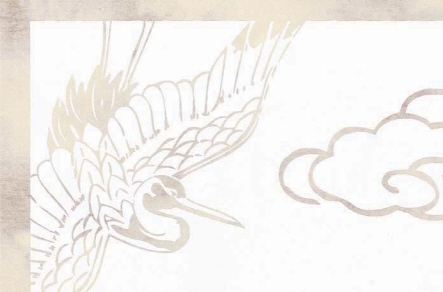
4. CRANE MODELLOS. Apply the Japanese Crane Panel Modello patterns according to manufacturer’s installation instructions. Burnish the adhesive pattern well to the surface.
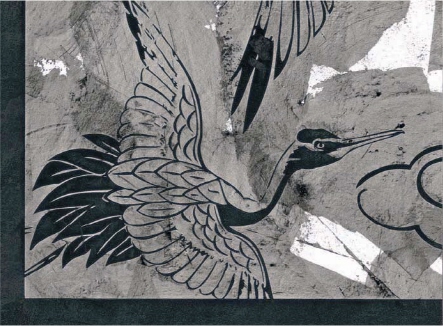
5. CRANES. Use a large Japan scraper to apply a thin coat of Ebony Frost LusterStone through all of the design areas, including the outer frame area that extends to the edge of the canvas. Allow the paint to dry and repeat for complete coverage.
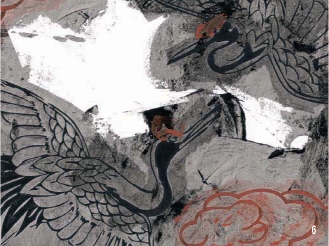
6. CLOUDS AND CRESTS. Tape around the areas that will receive the red paint—the clouds and the crests of the birds’ heads. Apply one thin coat of Mandarin Red LusterStone using a Japan scraper. Apply this thinly so that some of the black shows through from underneath. Allow to dry and remove the Modello Decorative Masking Pattern.
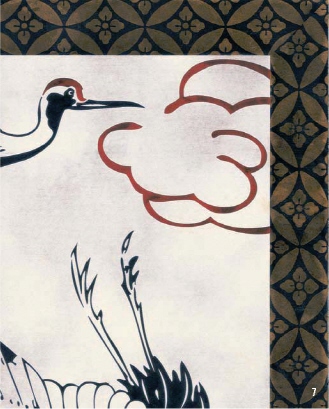
7. BORDER STENCIL. Apply 2-inch (51mm) blue painter’s tape inside the black band to protect the center of the panel. Use 1-inch (25mm) blue painter’s tape to tape around the outer edge, leaving a 3-inch (76mm) solid black band in between. Center the Floral Lattice Allover design in this area and stencil it with Olympic Gold, using a swirling and stippling motion with a 1-inch (25mm) brush. Create a mitered corner with tape. To have the stencil design finish in the same way in each corner, begin with a floral element centered between each corner and stencil out to each edge from there.
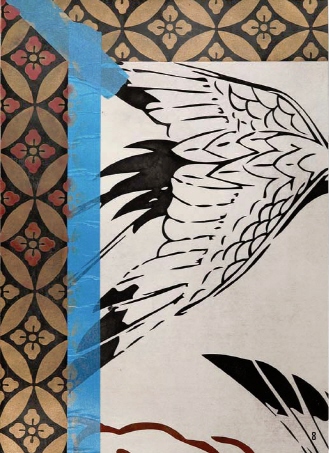
8. FINISHING TOUCHES. Go back and replace the stencil over the design. Use a  -inch (10mm) stencil brush to color just the outer edges of the flower petals with Sashay Red. Lightly touch the areas where the lattice points come together with the red color. The photo shows this in progress.
-inch (10mm) stencil brush to color just the outer edges of the flower petals with Sashay Red. Lightly touch the areas where the lattice points come together with the red color. The photo shows this in progress.
TO FINISH: Use a metal ruler and sharp craft knife to trim ½-inch (13mm) from around each outer edge for a nice clean finish. Apply to the wall surface using wallpaper adhesive. To create a rod-pocket hanging panel, cut your Roc-lon canvas several inches longer to start, fold it down and glue or sew to create a panel to insert a dowel or drapery rod through.